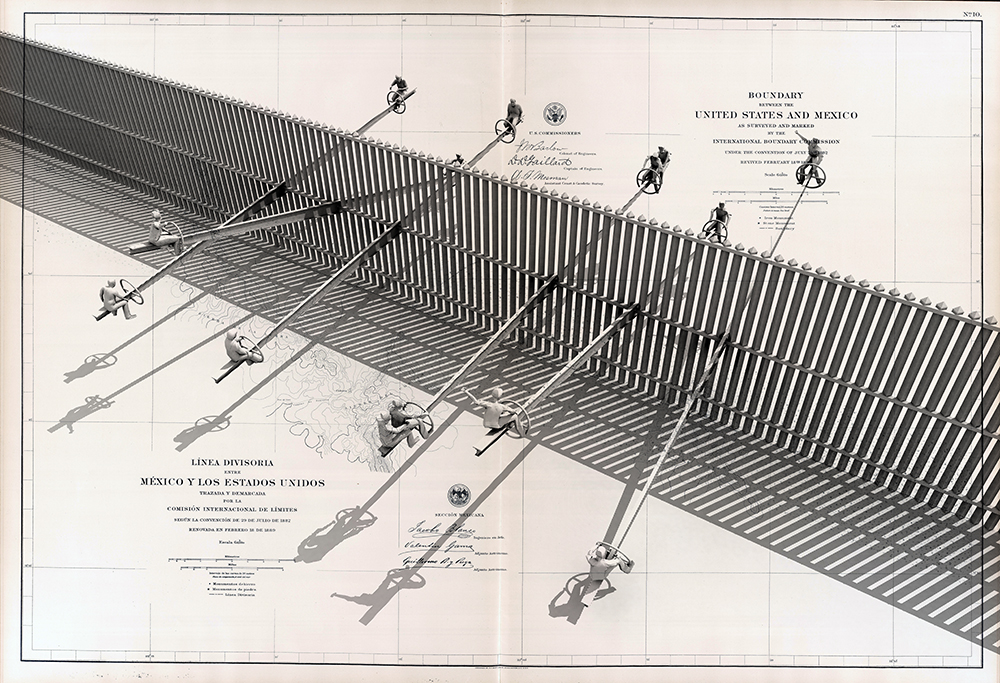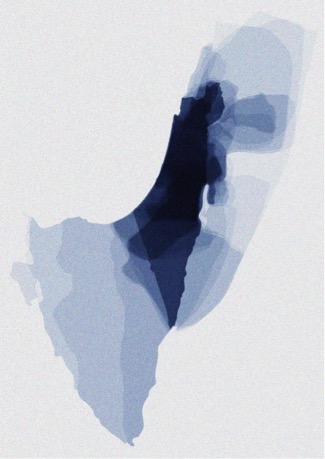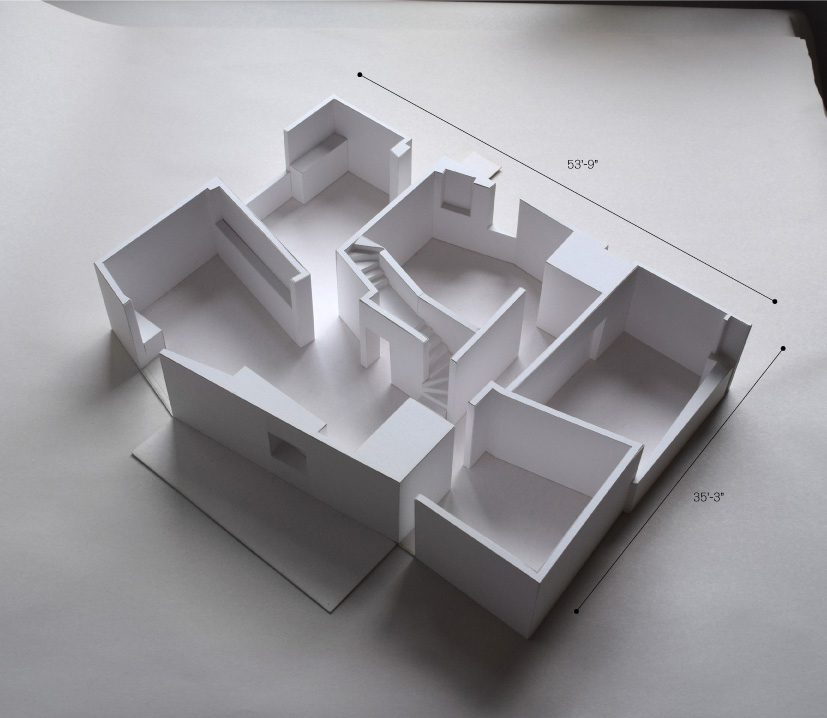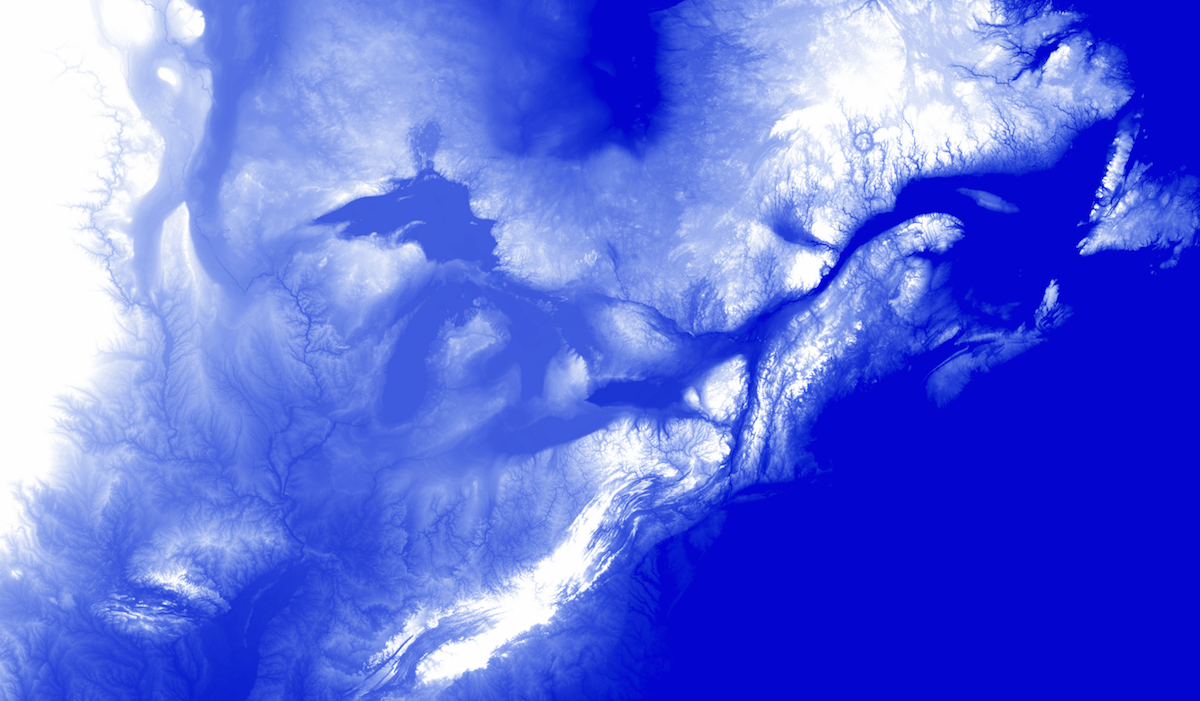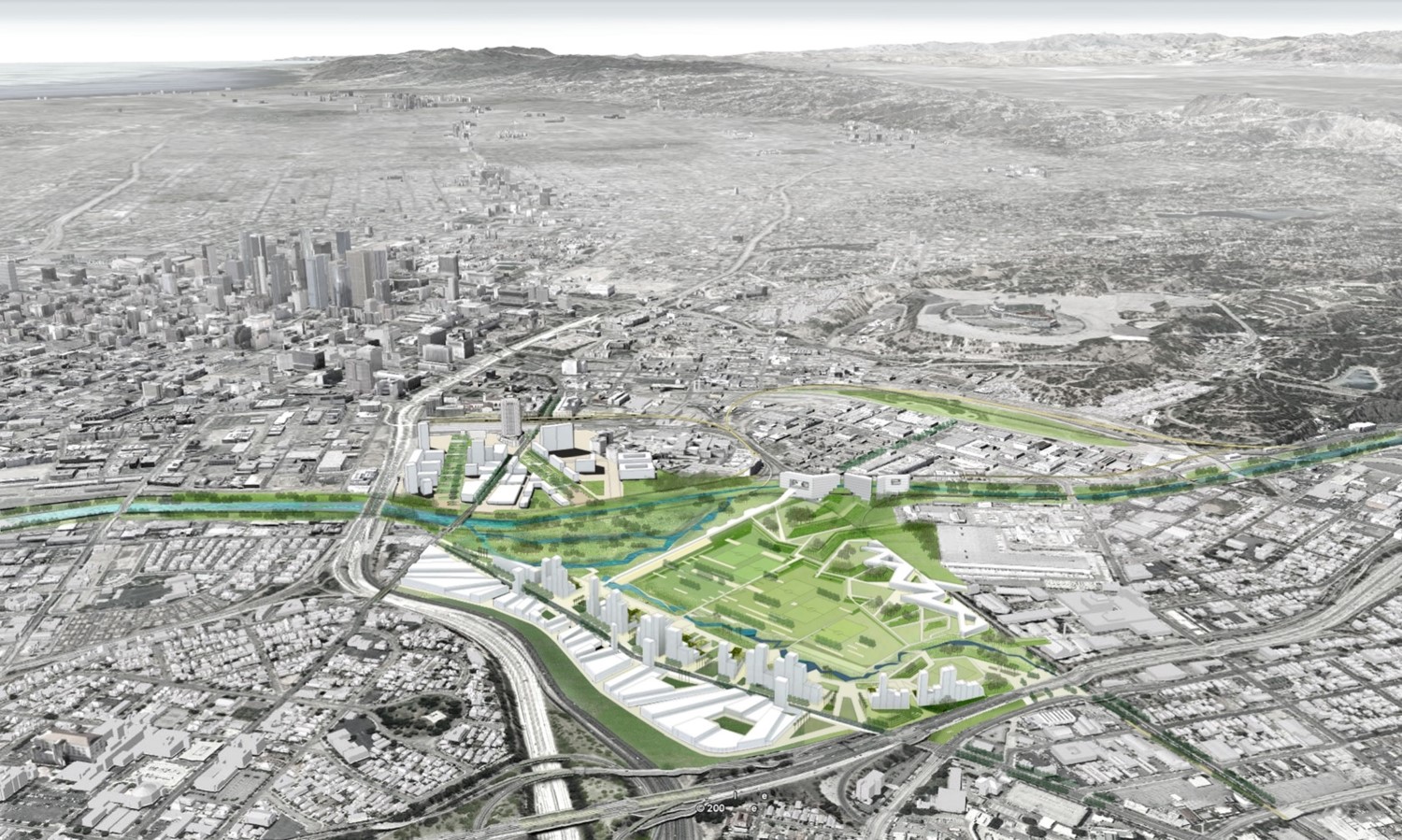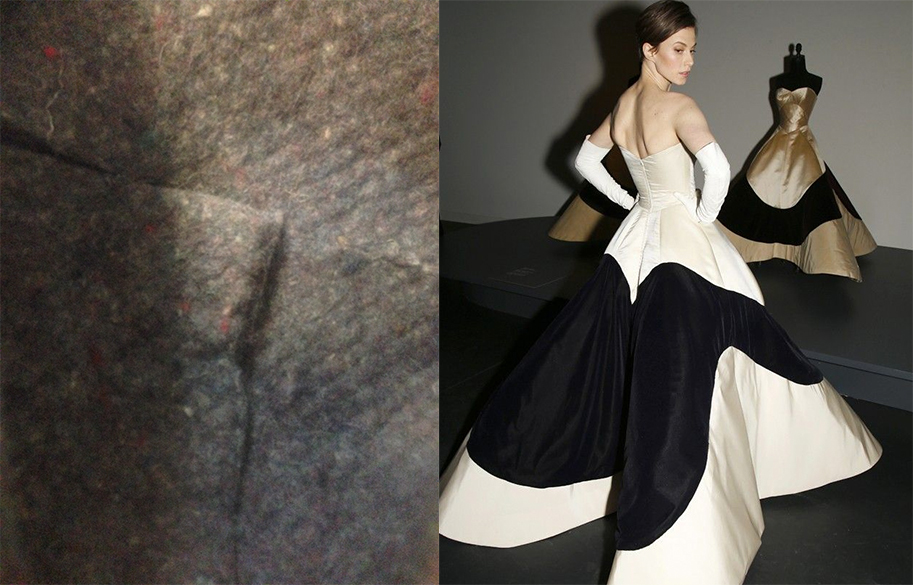Anna Neimark and Andrew Atwood, “Working Buildings”
In this lecture Anna Neimark and Andrew Atwood will present the built work of First Office as a working process. The title, Working Buildings, borrows its form from the more common expression “working models.” While working models tend to be tentative and temporary, built work is often presented as definitive and final. But in an early stage of a young practice, the distinction between the two is often difficult to draw. Built work can appear vulnerable, hesitant, even questionable. The presentation will address models that grow to the scale of buildings and buildings that remain unfinished or uncertain even in their completed state.
Anna Neimark and Andrew Atwood are founders of First Office in downtown Los Angeles. Built projects include a collaboration on the Pinterest office headquarters in San Francisco, a temporary screening room at the MAK Center for Art and Architecture in Los Angeles, and some small houses. Their texts have been published widely, in Log, Perspecta, Project, and Future Anterior, and have been compiled in a Graham Foundation book Nine Essays, published with Treatise Press in 2015. That same year, First Office received the Architect’s Newspaper’s Best of Young Architects prize and became a finalist in MoMA PS1’s Young Architects Program.
Photo (c) Naho Kubota
Ronald Rael, “Borderwall as Architecture”
Despite recent attention to wall building as a security measure, the building of barriers along the U.S. – Mexico border is not a new phenomenon. The U.S. Secure Fence Act of 2006 funded the single-largest domestic building project in the twenty-first century and financed approximately 700 miles of fortification, dividing the U.S. from Mexico at a cost of up to $16 million per mile. Today, approximately one third of the 1,954-mile-long border between the U.S. and Mexico has been walled off. Ronald Rael will discuss his book, Borderwall as Architecture: A Manifesto for the U.S. – Mexico Boundary, a timely re-examination of what the physical barrier that divides the United States of America and both a protest against the wall and a projection about its future.
This event is co-sponsored by the Office and Communications and the David Rockefeller Center for Latin American Studies.
Malkit Shoshan, “Border Ecologies”
Borders shape and consolidate relations between states, people, jurisdictions, political entities, and territories, and they often lie at the center of conflict between them. They are tools entangled in complex socio-political and economic ecologies. While some borders are relatively stable, others are in a constant flow. They regulate economic relations and people’s access to places, resources, and rights.
Borders determine the way our surroundings are organized, inhabited and controlled, and the ways communities relate to one another—while some break through borders to survive, others fence themselves off.
In this lecture, Shoshan will present case studies from FAST’s ongoing investigations and engagements with conflict and post-conflict areas. The concurrent exhibition “Border Ecologies” examines the spatial processes of bordering in conflict and post-conflict contexts. It concentrates on the way borders impact communities and produces new spatial forms
The Foundation for Achieving Seamless Territory (FAST) is an Amsterdam- and New York-based architectural think-tank that initiates and develops cross-disciplinary research, advocacy, and design projects at the intersection between architecture, planning, and human rights. FAST is led by Malkit Shoshan.
Michelle Chang, “Songs You Know by Heart”
If the prevailing pictorial modes in antiquity and the Renaissance were tied to each era’s ideas on form and space, what assumptions do contemporary representational frameworks bring to architecture today? In “Songs You Know by Heart,” Michelle Chang discusses her recent projects through the lens of architectural representation. With three projects, House A,B, Noise, and Deep Color, the talk considers how design can engage the alternative environments set up by contemporary media and change course from conventions of the past.
Michelle Chang founded an independent practice in 2014 after working on several residential, cultural, and urban projects at offices in New York, Boston, and California. In her research and teaching, she explores the translations between design and building as they relate to optics, digital media, and architectural production. Chang is a former MacDowell Colony fellow and a recipient of the Architectural League Prize for Young Architects + Designers. Her work has been exhibited in galleries and museums in the US and abroad.
Image © Jeff Fitlow/Rice University
Richard Sennett, “The Open City”
Cities should open up opportunities, connect people to new people, free us from the narrow confines of tradition — in a word, the city should deepen experience. But modern cities work the opposite way: urban inequality restricts opportunity; spatial segregation isolates people into homogeneous class, racial, and ethnic groups; the public spaces of today’s cities are not places for political innovation. In this talk, Richard Sennett explore ways to open up the city so that place matters more.
Richard Sennett has explored how individuals and groups make social and cultural sense of material facts — about the cities in which they live and about the labour they do. He focuses on how people can become competent interpreters of their own experience, despite the obstacles society may put in their way. His research entails ethnography, history, and social theory. As a social analyst, Mr. Sennett continues the pragmatist tradition begun by William James and John Dewey.
His first book, The Uses of Disorder, [1970] looked at how personal identity takes form in the modern city. He then studied how working-class identities are shaped in modern society, in The Hidden Injuries of Class, written with Jonathan Cobb. [1972] A study of the public realm of cities, The Fall of Public Man, appeared in 1977; at the end of this decade of writing, Mr. Sennett sought to account the philosophic implications of this work in Authority [1980].
At this point he took a break from sociology, composing three novels: The Frog who Dared to Croak [1982], An Evening of Brahms [1984] and Palais Royal[1987]. He then returned to urban studies with two books, The Conscience of the Eye, [1990], a work focusing on urban design, and Flesh and Stone[1992], a general historical study of how bodily experience has been shaped by the evolution of cities.
In the mid 1990s, as the work-world of modern capitalism began to alter quickly and radically, Mr. Sennett began a project charting its personal consequences for workers, a project which has carried him up to the present day. The first of these studies, The Corrosion of Character, [1998] is an ethnographic account of how middle-level employees make sense of the “new economy.” The second in the series, Respect in a World of Inequality, [2002} charts the effects of new ways of working on the welfare state; a third, The Culture of the New Capitalism, [2006] provides an over-view of change. Most recently, Mr. Sennett has explored more positive aspects of labor in The Craftsman [2008], and in Together: The Rituals, Pleasures and Politics of Cooperation[2012]. The third volume in this trilogy, Building and Dwelling, will appear in 2016.
Among other awards, Richard Sennett has received the Hegel and Spinoza Prizes and an honorary degree from the University of Cambridge.
Clare Lyster and Mason White
Mia Lehrer, “Advocacy by Design”
As founder and president of Mia Lehrer + Associates (MLA), Mia Lehrer (MLA ’79) leads the studio on a wide range of projects that include urban revitalization developments, urban parks and greenways, streetscapes and mobility planning, and watershed masterplanning. Internationally recognized for her design excellence and environmental leadership, Mia is passionate about bringing nature to the city and seeks opportunities to improve the relationship between the built environment, urban ecology, and the community. She is especially known for her work with complex natural systems in collaboration with diverse consultant teams and public stakeholders. Mia serves as a board member for a wide range of agencies and non-profits. In 2014, President Obama appointed Mia to the U.S. Commission of Fine Arts, which is tasked with advising the President, the Congress, and District of Columbia governments on matters of design and aesthetics, as they affect the federal interest. She was also awarded the 2016 LaGasse Medal for her notable contributions to public landscapes.
Focusing on Los Angeles and the greater southern California region as a case study, this lecture will explore the challenges and strategies for design advocacy in the urban landscape. The lecture will first provide an overview of the environmental, climactic, infrastructural and political context of the Los Angeles Metropolitan area. The lecture will then share several built and conceptual projects that exemplify the MLA studio’s focus on using advocacy as a design tool in recalibrating the city.
“Emerging Issues in Architectural Representation,” with Jennifer Bonner and Zeina Koreitem, moderated by Michael Hays
By now, most architects have mastered the standard softwares for design conceptualization and representation. However, it is only recently that we have begun to critically rethink the techniques and conventions of representation that have defined the discipline over hundreds of years. This event will focus a discussion around emerging issues in architectural representation that include orthographic and post-orthographic projection, extrusion, massing, material and computational color, movement, automation, and questions about authorship and appropriation. Presentations by Jennifer Bonner MArch ’09, assistant professor of Architecture, and Zeina Koreitem MDes ’16, design critic in architecture; moderated by Michael Hays, Eliot Noyes Professor of Architectural Theory and interim chair of the Department of Architecture.
Exhibition Opening for “Designing Planes and Seams”
Curators Anita Berrizbeitia MLA ’87, professor of landscape architecture, chair of the department of landscape architecture; Harold Koda MLA ’00, fashion scholar, curator, and the former curator-in-chief of the Anna Wintour Costume Center at the Metropolitan Museum of Art; and Ken Smith MLA ’86, design critic in landscape architecture, will speak informally about the exhibition.
Designing Planes and Seams focuses on the relationship of flat or planar materials and the seaming and construction necessary for creating expressive three-dimensional form. Focusing on the pattern pieces of iconic historic designs, the dressing of the contours of the body is represented by examples of reductive geometry and minimal intervention. In fashion, the pattern piece articulates the designer’s intellectual process as well as the wearer’s form. It is both map and plan.
This exhibition suggests parallels between clothing design and landscape architecture. Both disciplines share formal concerns associated with the creation of material structure(s) to fit an organic body; and in both clothing and landscape, the materiality of form-making is conceived conceptually and tectonically to reflect the bodily needs to move, breathe, and adapt. They also share physical constraints: in clothing, there are constraints of protection from the environment and regulation of body heat; and in landscape, those of ecological process, movement of water, and maintenance of habitat and vegetation. Both incorporate and convey cultural expressions such as identity and personality, social status, group affiliation and ethnicity, gender and sexuality, power and politics, as well as other cultural narratives.
By exploring the meaning of seams, junctures, materials, and form making, the parallels that are revealed between clothing and landscape will expose their shared concerns of cultural production within contemporary society.
Tomás de Paor, “previous, next”
“‘I see earth. It is so beautiful.’
“Dawn asks,
‘What does the water surface look like?’
‘Darkish, with faintly gleaming spots.’
‘Do you get the feeling that our planet is round?’”
A selective reading of cosmonaut Yuri Gagarin’s exchanges with ground control during the 108-minute space flight of Vostok I, launched on April 12, 1961, the first human orbit of earth in history. Seven short essays discuss the making of buildings, the making of machines, and that of time pieces under the titles “earth,” “hut,” “yard,” ‘paper,” “scissors,” and “rock.”
Tomás de Paor is founder and principal of a practice based in Dublin, Ireland. Concerned with perception and construction, his work has been extensively published and exhibited. An elected Fellow of the Royal Institute of Architects of Ireland, de Paor was voted Young Architect of the Year by Building Design/Corus in 2003, and was nominated for the Mies van der Rohe Prize in 2005 and 2007 and the BSI Swiss Architecture Award in 2014. In 2015 he was elected a member of Aosdána, and in 2016 was elected International Fellow of the Royal Institute of British Architects.

